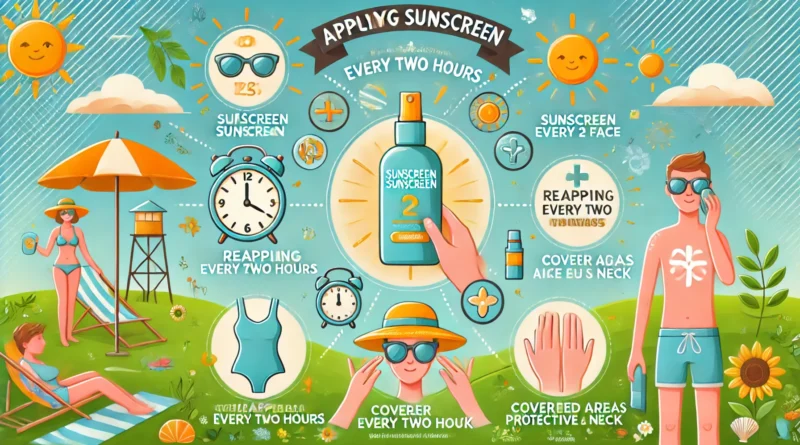Top Tips for Applying Sunscreen Effectively
Protecting your skin from the harmful effects of the sun is crucial for maintaining healthy skin and reducing the risk of skin cancer. Sunscreen is one of the best tools for sun protection, but to reap its full benefits, it must be applied correctly. Here are some top tips for applying sunscreen effectively to keep your skin safe and radiant.
Choose the Right Sunscreen
Before applying sunscreen, it’s important to choose the right product for your needs. Look for the following features:
- Broad-spectrum protection: Ensure the sunscreen protects against both UVA and UVB rays.
- SPF 30 or higher: A sunscreen with at least SPF 30 provides adequate protection for most people.
- Water resistance: If you plan to swim or sweat, opt for a water-resistant sunscreen.
- Skin type compatibility: Choose a formula that suits your skin type, such as oil-free for oily skin or hypoallergenic for sensitive skin.
Apply Generously
One of the most common mistakes people make is not applying enough sunscreen. Dermatologists recommend using about one ounce (a shot glass full) to cover your entire body. For your face alone, a nickel-sized amount is typically sufficient. Remember, a thin layer may not provide the protection listed on the bottle.
Don’t Forget Key Areas
Some areas of the body are often overlooked when applying sunscreen. Make sure to cover:
- Ears
- Neck
- Back of the hands
- Feet, especially if you’re wearing sandals
- Scalp, if you have thin or no hair (or wear a hat for added protection)
Apply Before Going Outdoors
Sunscreen needs time to create a protective barrier on your skin. Apply it at least 15-30 minutes before going outside. This ensures maximum effectiveness and helps the formula absorb properly into your skin.
Reapply Regularly
No sunscreen lasts all day. Reapply every two hours, or more frequently if you’re swimming, sweating, or towel-drying. Even water-resistant sunscreens need to be reapplied after prolonged water exposure.
Layer Properly
If you use other skincare or makeup products, apply sunscreen as the last step in your skincare routine but before makeup. This ensures the sunscreen can create a protective barrier without being diluted or compromised.
Use Sunscreen Year-Round
The sun’s harmful rays can affect your skin even on cloudy days or during winter months. UVA rays, which cause premature aging, can penetrate through clouds and windows, so make sunscreen application a daily habit regardless of the season.
Protect Children and Babies
For children over six months, use a sunscreen formulated for sensitive skin or designed specifically for kids. Babies under six months should avoid direct sun exposure, and their delicate skin should be protected with clothing, hats, and shade instead of sunscreen.
Combine with Other Sun Protection Methods
While sunscreen is a powerful tool, it works best when combined with other sun protection strategies:
- Wear protective clothing, including hats and sunglasses.
- Seek shade during peak sun hours (10 a.m. to 4 p.m.).
- Use umbrellas or canopies for extra coverage.
Check Expiration Dates
Expired sunscreen loses its effectiveness. Check the expiration date on the bottle, and replace it if it’s past its date or if the texture or smell has changed.
Applying sunscreen effectively is key to protecting your skin from harmful UV rays. By choosing the right sunscreen, applying it properly, and reapplying as needed, you can enjoy the outdoors safely while minimizing the risk of sun damage. Make sunscreen application a non-negotiable part of your daily routine and pair it with other sun protection measures for comprehensive care. Your skin will thank you! Use quality cosmetics, creams with hyaluronic acid and perfumes like Asad.

